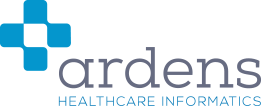TABLE OF CONTENTS
- Introduction
- Allergies
- Antimicrobials
- Interactions
- Dosing
- Paediatrics
- Local Prescribing
- Order of formularies
- Over the counter and self-care
- Off Label
- Overall Condition
- Reference
Introduction
Ardens is a clinical decision support tool that, when used appropriately, enhances patient safety, improves treatment outcomes and streamlines workflows. We aim to keep templates concise without excessive wording so that the pertinent information is available to prompt prescribers in their decision making. Some assumptions are made about the competence of the prescriber and that they follow good prescribing practice by only prescribing where they feel confident to do so. No tool can replace clinical judgement, and prescribers should be conscious that there can be false positives or negatives in search results.
In the current healthcare climate, medications can be prescribed from a number of sources. Community pharmacies, private clinics and secondary/tertiary care may be supplying medications in addition to those prescribed by primary care. It is always important to check all medications are correctly documented.
Where appropriate, Ardens prompts for prescribing supplementary medications to protect from side effects, e.g. PPI for NSAIDs; however, these may not be comprehensive, and prescribers are advised to use their clinical judgement. Due to current reporting limitations, we are unable to provide data on dosage or the number of tablets/puffs used. Therefore, a comprehensive assessment of the patient is necessary. An example of this is steroid use. Additional creams or eye ointments may be combined with a low-dose inhaled corticosteroid or oral corticosteroid, meaning that gastroprotection, bone protection or advice about adrenocortical crisis may apply.
Allergies
Confirm that allergies are correctly documented, and that no new allergies have been discovered since the last allergy status was recorded.
Antimicrobials
Check for recent courses from other healthcare providers, e.g. dentistry. Consider recent microbiological results and sensitivities.
Interactions
There are inbuilt interaction checkers within both EMIS and SystmOne. Therefore, Ardens do not duplicate this by reporting on interactions or listing them on templates. There are prompts to remind clinicians to check for these.
Dosing
See the BNf/BNc for appropriate use and dosingin specific populations, such as those with hepatic and renal impairments, pregnancy, and breastfeeding. Often limited data is available on prescribing in these groups and caution should be exercised.
Paediatrics
The age bands apply to children of average weight and size. Prescribers should consider other factors such as the severity of the condition and the size of the child they are prescribing for.
Local Prescribing
Local prescribing recommendations may differ slightly from national guidance. Always consult your local commissioner guidelines for whether medications are included on formulary for the indication you are considering.
Order of formularies
Medications are ranked in order of preference in the guidelines. Where guidelines list options, these are alphabetised on Ardens.
Over the counter and self-care
Where possible, OTC purchase and self-care strategies should be encouraged.
Off Label
Sometimes medication is used off-label. SystmOne formularies denote this with an asterix and a tick box for reminding the clinician to discuss this with the patient.
Overall Condition
Consider the context of the patient's overall condition, social determinants and preferences.
Reference
We include the reference for the template alongside other useful resources. Prescribing monitoring, and alerts are listed on a spreadsheet accessible here , which includes links to the references used to govern that search.
Ardens employs a team of clinicians who are constantly working to develop and create the resources that align with current best practice. When a national body publishes guidance, e.g NICE or MHRA, we are aware of this, and discuss within our clinical and technical teams how we can best implement it in an accessible and helpful manner.
If you require any further assistance on the process above, please contact Ardens support on:
